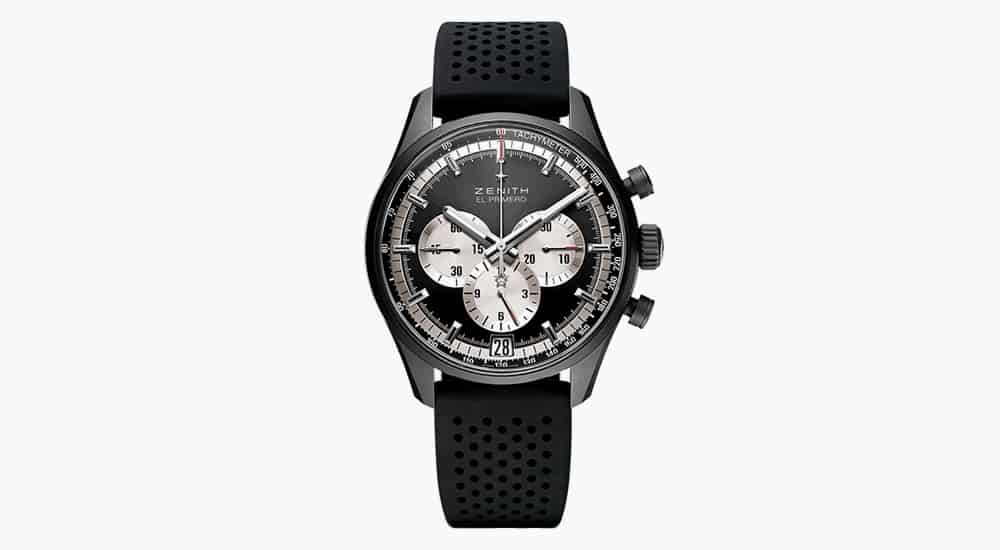Why Is The Rolex Daytona The Most Well-Known Rolex Timepiece? - 13 minutes read
Few watches have sparked as much mystique as the Rolex Cosmograph Daytona. It is named after the Florida city known as the “Capital of Speed,” which is possibly more famous than the motor racing that takes place there. It has achieved a stature comparable to possibly only the Submariner and the Speedmaster, allowing it to lose the name of its legendary manufacturer. Rolex‘s sole conventional chronograph for the previous 54 years has always had a long waiting list, and older examples have become both the cornerstone and the brightest stars of the auction market.
The Rolex Daytona’s History And Heritage
The Daytona, like the Heuer Carrera and Omega Speedmaster, was introduced in 1963 in order to capitalize on the growing popularity of motor racing (remember this is long before the Speedmaster went into space). Rolex had previously created a few chronographs, but they were of a prior generation, with thin, beautiful hands, Arabic numerals, and smaller casings. The sports chronograph was invented at the beginning of the 1960s. And… it was a bit of a failure. Daytonas were frequently discounted by dealers, and significantly fewer were produced than competitor watches.
“We like to think of Rolex as a highly focused and resolute corporation,” says Rolex historian, author, and collector James Dowling. “This was not the case in the 1950s and 1960s, when model names were frequently ambiguous.” The Rolex Submariner was almost dubbed the Rolex Skin Diver, and several watches were released with such dials; similarly, the Rolex Daytona was almost called the Rolex Le Mans.
“When I got my first Rolex in the late 1970s (a 1675 GMT), I asked for a discount, and the salesperson said, ‘Sorry sir, we don’t discount Rolex, but if you want one of the Daytonas, I can give you 20% off.'”
All of that changed when Mr Paul Newman, a superb racing driver as well as a Hollywood figure, started wearing one. In fact, he scarcely removed his.
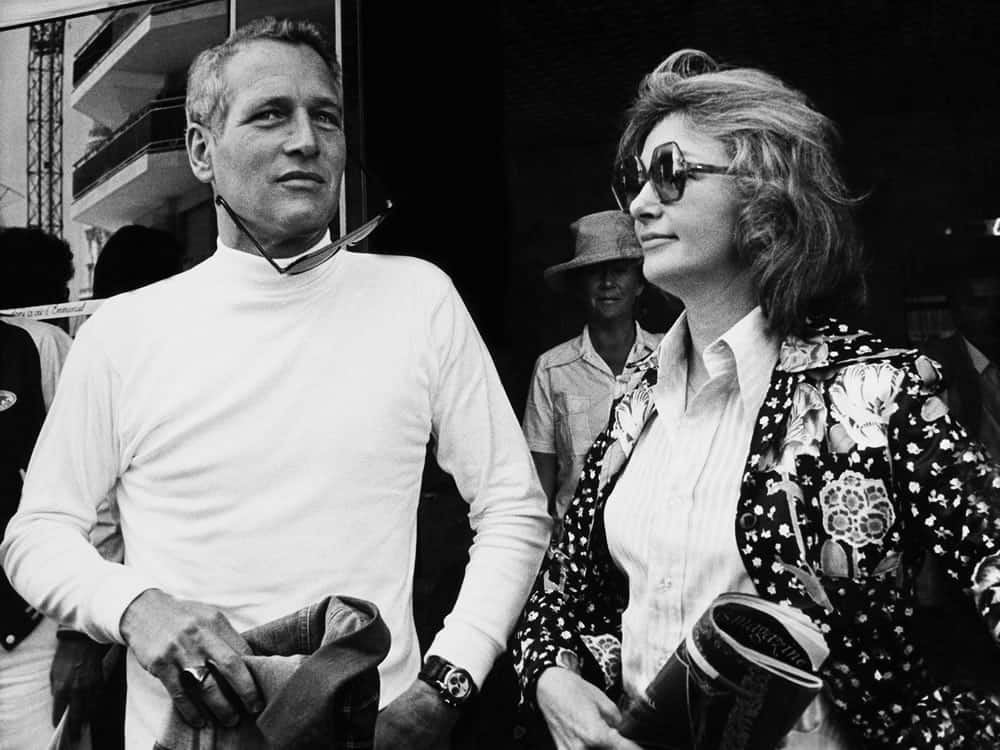
Paul Newman helped make the Rolex Daytona iconic
The Daytona was powered by a movement supplied abroad from the start, as was the practice in those days. The Valjoux 72 chronograph calibre was a well-made and dependable hand-wound chronograph calibre with a column wheel controller and lateral clutch. Automatic chronographs first appeared on the market in 1969, but Rolex remained committed to the manual Valjoux, making the odd update, until 1988, when it thought the moment had come to go automatic.
El Primero chronograph movements were supplied from Zenith, detuning its signature high frequency down to 28,800vph (thus saving Zenith’s bacon with the consistent business that was to come). The Daytona had its most substantial facelift since its introduction, with crown guards, a thicker steel bezel, new fonts, and subdials. The Daytona’s appeal truly began here – the market was recovering from the Quartz Crisis, and the concept of a luxury watch arose.
Rolex finally introduced its own in-house chronograph mechanism, the calibre 4130, in 2000. With its reputation in mind, Rolex ensured that it had unrivaled characteristics for anything else in the sports chronograph market, including daily accuracy of +/-2 seconds, a 72-hour power reserve, and fewer components than most conventional chronographs.
Why Is There A Waiting List?
The Rolex Daytona in stainless steel has a long waiting list; easily a year or two, and that’s assuming the dealer knows you, you put your name down the day it was announced, and your middle name is “lucky.” The waiting list phenomena has evolved over decades, beginning in 1988 when Rolex equipped its Cosmograph with an automatic movement. The waiting list grew because Rolex was sourcing movements from Zenith, which was in low supply.
Nowadays, marketing is closely regulated, with global yearly manufacturing limited to a few thousand. Because of its iconic significance – and investment possibilities – some will wait; others will either go elsewhere or pay significantly more to acquire from a (non-Rolex-approved) re-seller. Gold and platinum Rolex Daytona models sell well, but they are not difficult to get. The stainless-steel variants have the longest waiting list.
The Money
The steel Rolex Daytona with the ceramic bezel released in 2016 (also known as reference 116500LN) costs £9,100 and comes with a white or black dial. If you buy from an authorized dealer, you may expect to put down up to 50% as a deposit.
Of course, the Rolex Daytona is available in a variety of metals, including yellow, rose, and white gold, as well as platinum, and as of Baselworld 2017, gold models now have an Oysterflex rubber strap as well as the full weight of a gold bracelet. At the time of writing, the platinum Cosmograph Daytona retails for £54,300 (official price on request); with currency rates how they are, Rolex has taken to raising prices at least yearly.

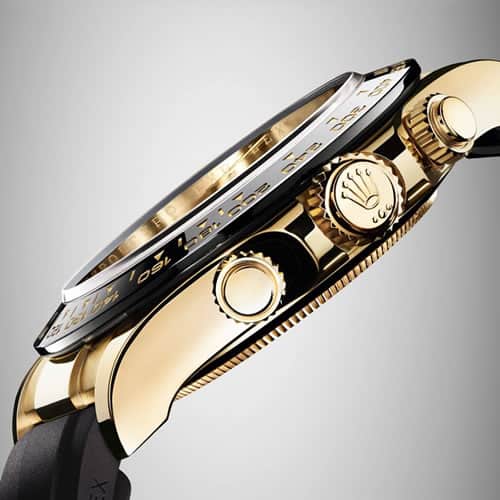
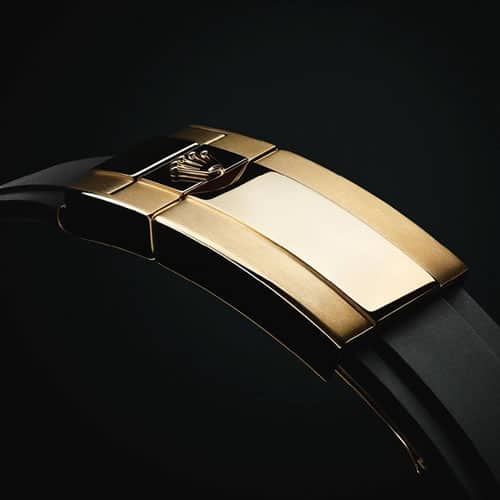
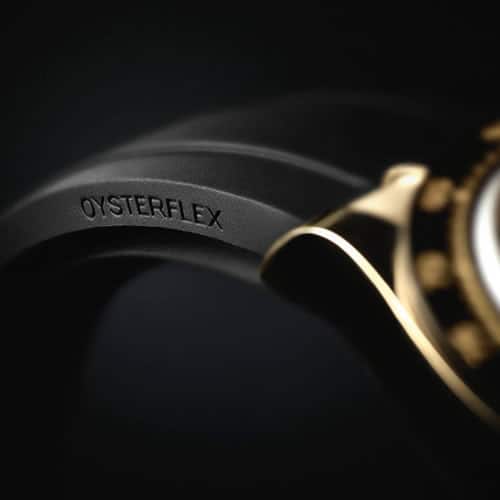
The new Rolex Oyster Perpetual Cosmograph Daytona 2017
If you want to buy a pre-owned or vintage watch (the distinction being mostly age; “vintage” means no more than around 25 years ago), expect to pay at least £9,000 for a watch in acceptable shape from a less desired era (say, the early 2000s). The sky is the limit from then on out.
New model 116500LNs are selling for £14,000 or more, and there is no such thing as a bad Valjoux Daytona from 1963 to 1988. An “average” Paul Newman will cost well over £50,000, but the greatest works will well exceed six figures. The record at auction is now held by a yellow gold Paul Newman (one of only three) that sold earlier this year at Phillips auction house for $3.7 million. The Ref:6239 Daytona non Exotic dial variant would be the greatest starting place for a collector. This is a classic Daytona with different dial variants that looks as excellent on a bracelet or strap.
The good news is that, so far, Rolex Daytonas have retained or increased greatly in value. Buying now may feel like you’re getting in at the top of the market, and while banks remind us that previous performance is no guarantee of future success, analysts see no signs of prices falling anytime soon. Braver purchasers may be willing to take a chance on previously less costly references, particularly those from the late 1980s and early 1990s.
Owning A Rolex Daytona
How To Wear It
Let us reminisce about your Daytona ownership and relish in its reflected beauty. You could wear it morning and night, to the boardroom, the bedroom, and the ballroom, but no one wants to be a bore about it. What’s your best look for the steel Daytona (style advise for the yellow gold and brown dial is a whole different ballgame), and why?
You may wear it with a suit, thanks to the 40mm diameter, but it’s not a watch for formal events, and you should keep the band well-fitting. That hanging-down-the-back-of-your-hand expression is not flattering.
The Daytona will shine almost everywhere else, which is a good thing. As a Rolex Oyster on a steel bracelet, it’s bombproof enough to wear out on the weekend, and it’ll be right at home in the mainstream minefield that is smart-casual.
Maintenance
Despite its aura of grandeur, the Daytona is not impervious to wear and tear, and it must be cared for as any other mechanical watch. Although Rolex watches come with an unparalleled guarantee, you should still get it serviced every five years or so. That won’t be cheap – but that shouldn’t come as a surprise. Expect to spend roughly £450 for the basic service, more if it need work, and be prepared to be separated from it for many months if it needs to return to Switzerland.
While this is going on, your local dealer should be able to provide you something different to wear in the meanwhile — presuming you purchased it from them in the first place. The good news for Rolex owners is that the firm extended its guarantee from 2 to 5 years in 2015; if you purchased a Daytona between 2013 and 2015, the warranty was retroactively expanded by a year.
Unless you expose a Daytona to extraordinary punishment, you shouldn’t anticipate anything to go wrong. Rolex’s build quality is unrivaled, and the addition of the ceramic bezel only strengthens the Daytona. The steel is high-quality 904L, and the watch is water-resistant to 100 meters — just remember to tighten the chronograph pushers.
How To Buy A Rolex Daytona
To summarize everything we’ve already said about purchasing a new Rolex Daytona, be exceedingly persistent and patient. Paying premium price to bypass the waiting list is risky; there’s a chance it’s a forgery, and even if it isn’t, make sure you can trust the vendor.
Online, don’t be scared to request more high-resolution images and the serial number (you can check it against registers of lost and stolen watches).
A modern model should come with all the papers if you’re purchasing used. This will become less likely and more valuable as they age.
How To Buy Vintage
If the new Daytona isn’t your thing or you can’t stand the wait, think about going old-school. A classic Daytona is certainly cool, as well as a wonderful investment.
Buy the seller is the single finest piece of vintage advise. Trust is key; if something appears to be too good to be true, it almost usually is. Purchase one online from a respectable auction house or dealer, but one would be very careful about buying one from a total stranger. However, that would be true of any valuable object.
If you’re going to buy something online, make sure it’s from a reliable store. Do your research and ensure you understand what serial number range your goal watch should fall into, as well as other specifics like as the font of the Rolex emblem – it has changed over time. Because there is a lot of money to be earned in imitation Rolexes, the con artists are skilled at their craft. Examine the dial (the bulk of the worth is in its condition and authenticity), and obtain second, third, and fourth views if necessary. There is no such thing as too much knowledge in the rabbit warren that is Rolex collecting.
The Best Rolex Cosmograph Daytona Iterations
So, what are the specific Rolex Daytona models you should be looking at? Leaving aside the possibility of landing a Paul Newman, here are six of the finest from the past.
Ref. 16520
The 16520 is the first steel automatic Daytona, and its popularity is reflected in its costs. There are more of them on the market than manual models, and prices are certain to rise more.
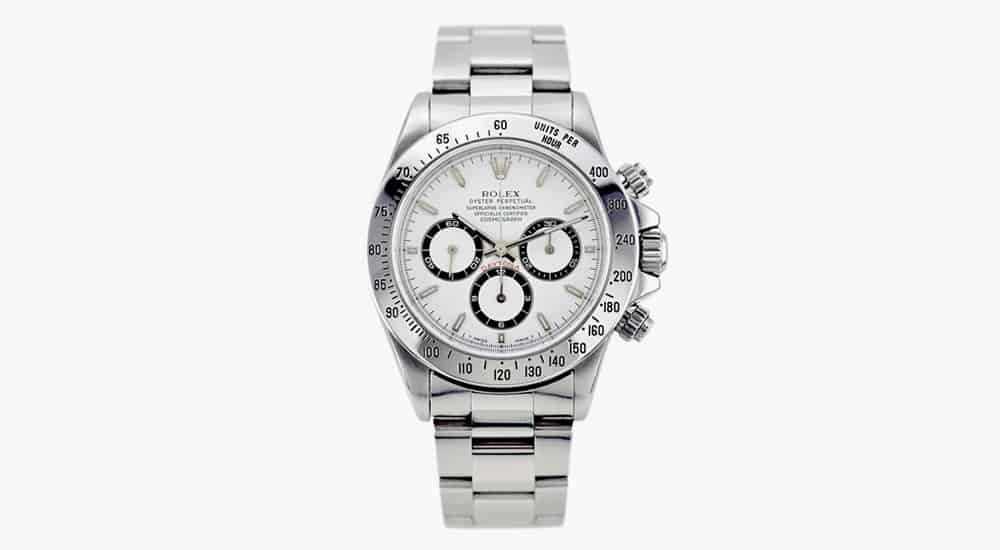
Ref. 6263
The 6263 was manufactured from 1971 to 1988 and is available in a variety of metals and dial combinations. If you want a pre-Zenith, manual winding Daytona, a 6263 is probably the simplest to obtain — but keep in mind that there is no such thing as a “undervalued” Daytona.
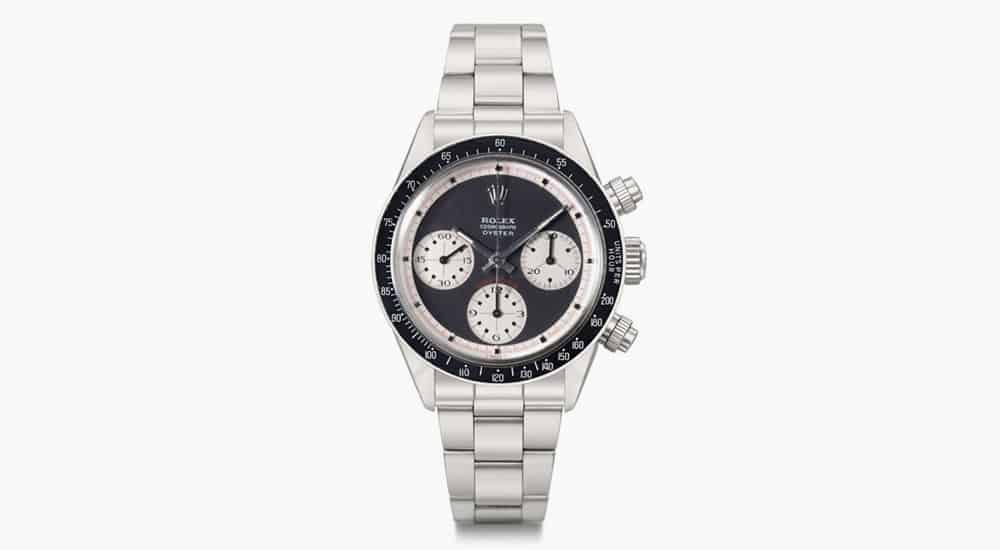
Ref. 16523
The steel and yellow gold edition of the “Zenith” Daytona has generally been less sought for in the vintage market than its all-steel relative. However, bi-metal watches are making a comeback, and as collectors turn their focus to the 1980s and early 1990s, they may be on the increase.
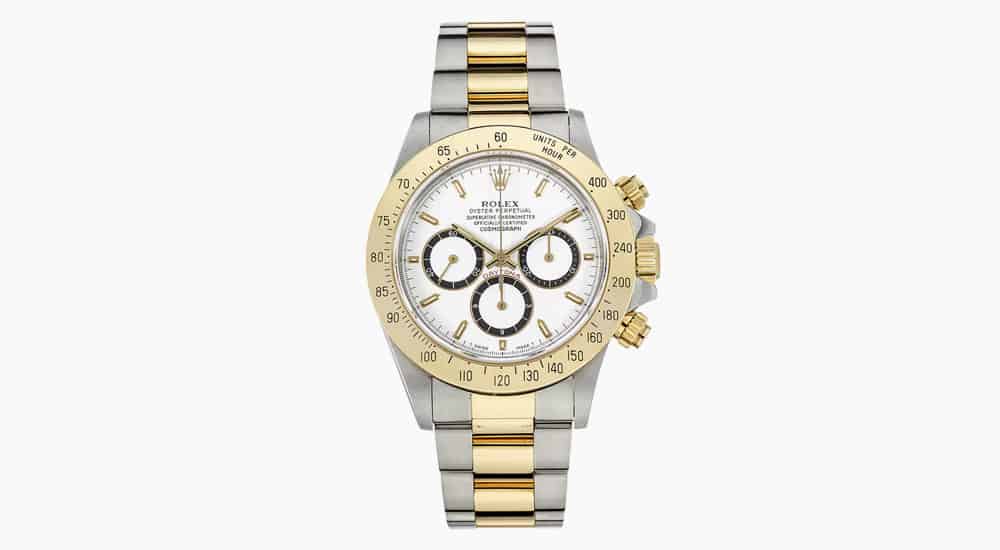
Ref. 116520
Except for one, the most current stainless steel Rolex Daytona, the 116520, has been superseded by the 2016 model (116500LN). Granted, this will have resulted in a price increase because the end of manufacturing means there are only a limited number available, but on the other hand, many people who were on the waiting list will now be looking for the new one. At first sight, it appears to be the same watch.
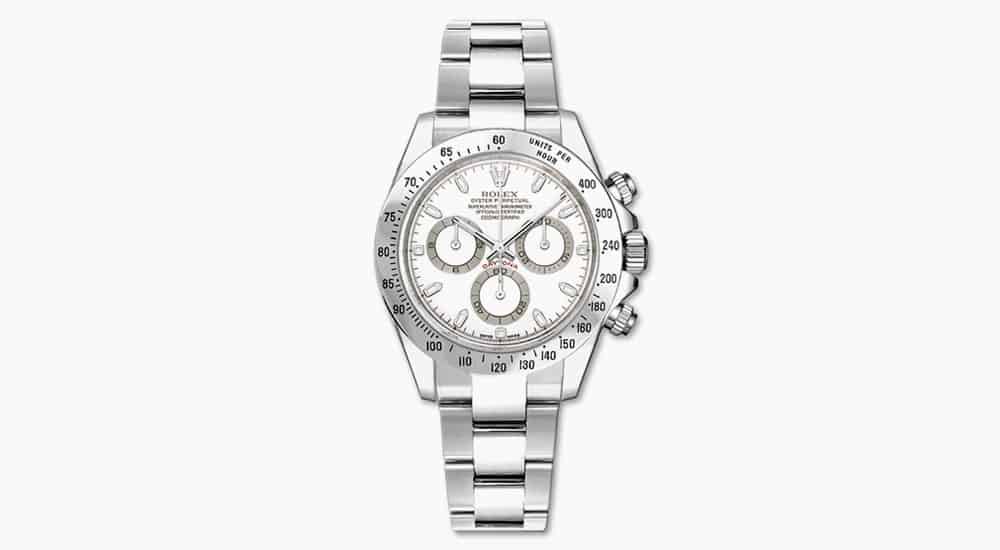
Ref. 116509 (pre-2017)
If the stealth-wealth Daytona exists, this is it — at least from the contemporary century. Easily mistaken for steel, this bracelet is made entirely of white gold, giving you all the wrist presence without the ostentation of yellow or rose gold bracelets. The Arabic numbers, along with the black and red “racing” subdials, create for an eye-catching mix.
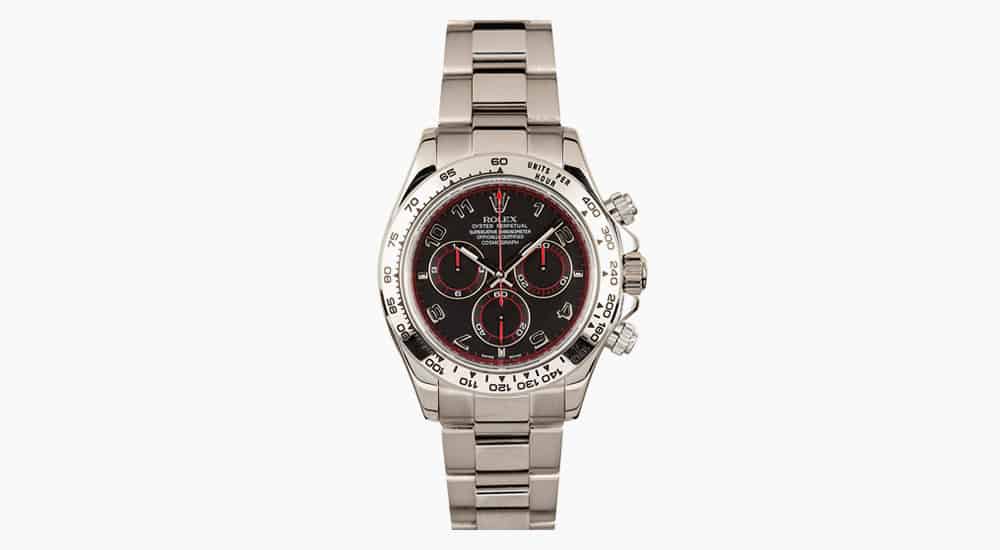
Ref. 116500LN
We couldn’t leave out the reigning Daytona: today’s model may be difficult to get, but they are available. The main difference is the inclusion of a ceramic bezel, and the important decision is whether to choose with a black or white face; each gives the watch a distinct personality. However, most fans would eat your arm off for either.
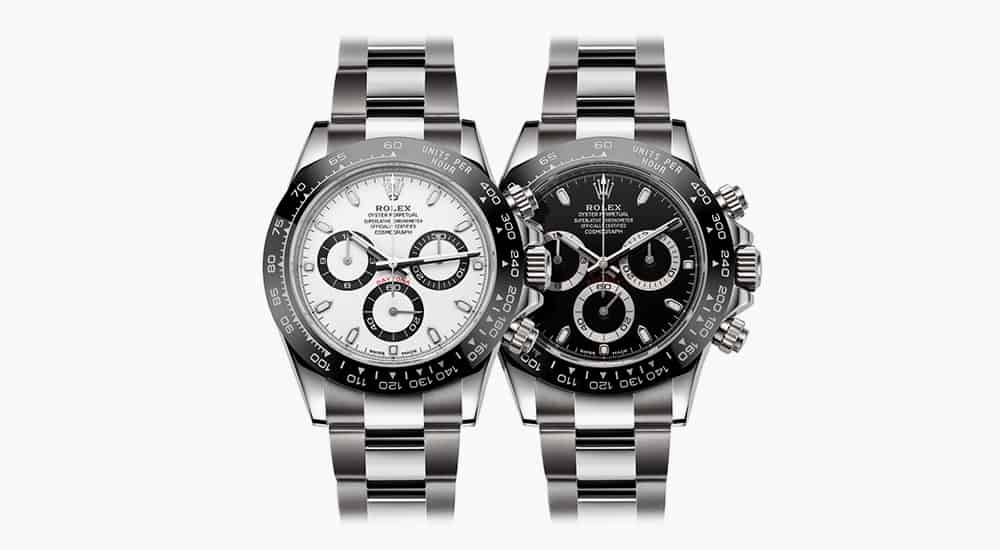
Alternatives To The Rolex Daytona
If, after all of this, you’re still not convinced that a Daytona is for you, the good news is that it’s not the only show in town. Where else could you go if the money burning a hole in your pocket is intended to go on one watch, and that it should be an automatic chronograph with a top-notch movement?
Breitling
The Breitling Navitimer is a chronograph with almost as much cachet, an equally interesting history, and adequate build quality. It contains an in-house chronograph movement, calibre B01, and a mostly unaltered design — albeit the slide rule-style telemetric scales are a bit of a stumbling block. You can undoubtedly spend Daytona money on a Navitimer, but the good news is that you don’t have to: the 43mm classic only £6,750.
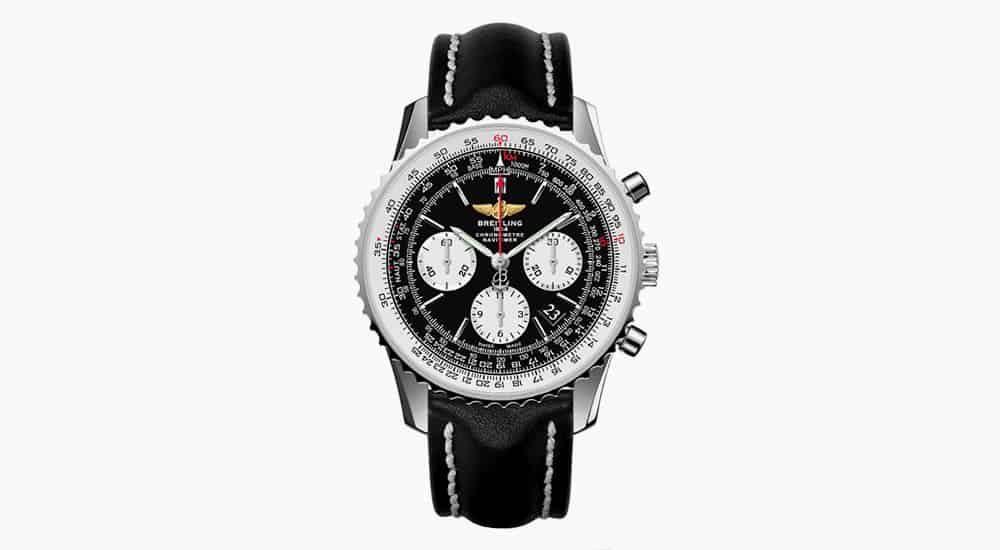
IWC
You may go to IWC in a similar manner. If you still want a bit of petrol with your watch, the latest Ingenieur collection offers several beautiful chronographs. The entry-level piece, interestingly enough, is a limited edition – the Edition 125 at £6,450 – followed by the normal Ingenieur Chronograph at £7,250 or the Chronograph Sport at £9,850, which has an unique lightning strike seconds hand.
However, you’d be better off skipping that complicated set of costs and heading right for the Portugieser Chronograph (£6,550): it may not look like a Daytona, but it’s unquestionably one of the best chronograph designs and a smart investment.
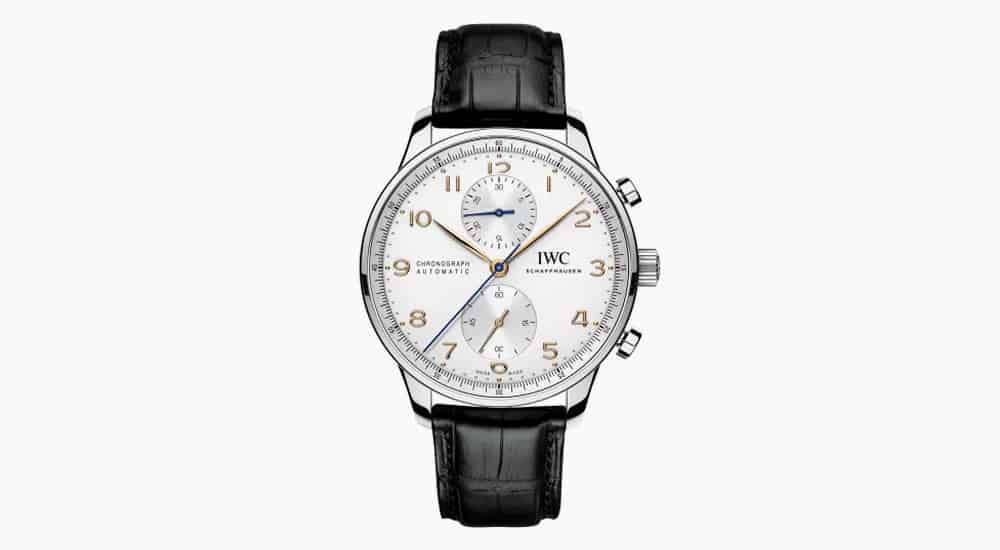
Blancpain
If you’re willing to pay five figures for something that, whisper it, outperforms the Rolex in terms of technical details while maintaining a relationship to the past, consider the Blancpain Fifty Fathoms Bathyscaphe chronograph. It has a flyback mechanism, which allows you to more quickly time successive events, a ceramic casing, and is water resistant to 300 meters. It’s yours for £12,490.

Zenith
Finally, you could do a lot worse than looking to Rolex’s former movement supplier. Zenith‘s El Primero is still in production, and your Daytona budget would allow you to select among the available models. There’s a model for everyone these days (and some that may not be for everyone), but we’d recommend the stylish new panda dial versions in black ceramic, which are now available for £7,200.
